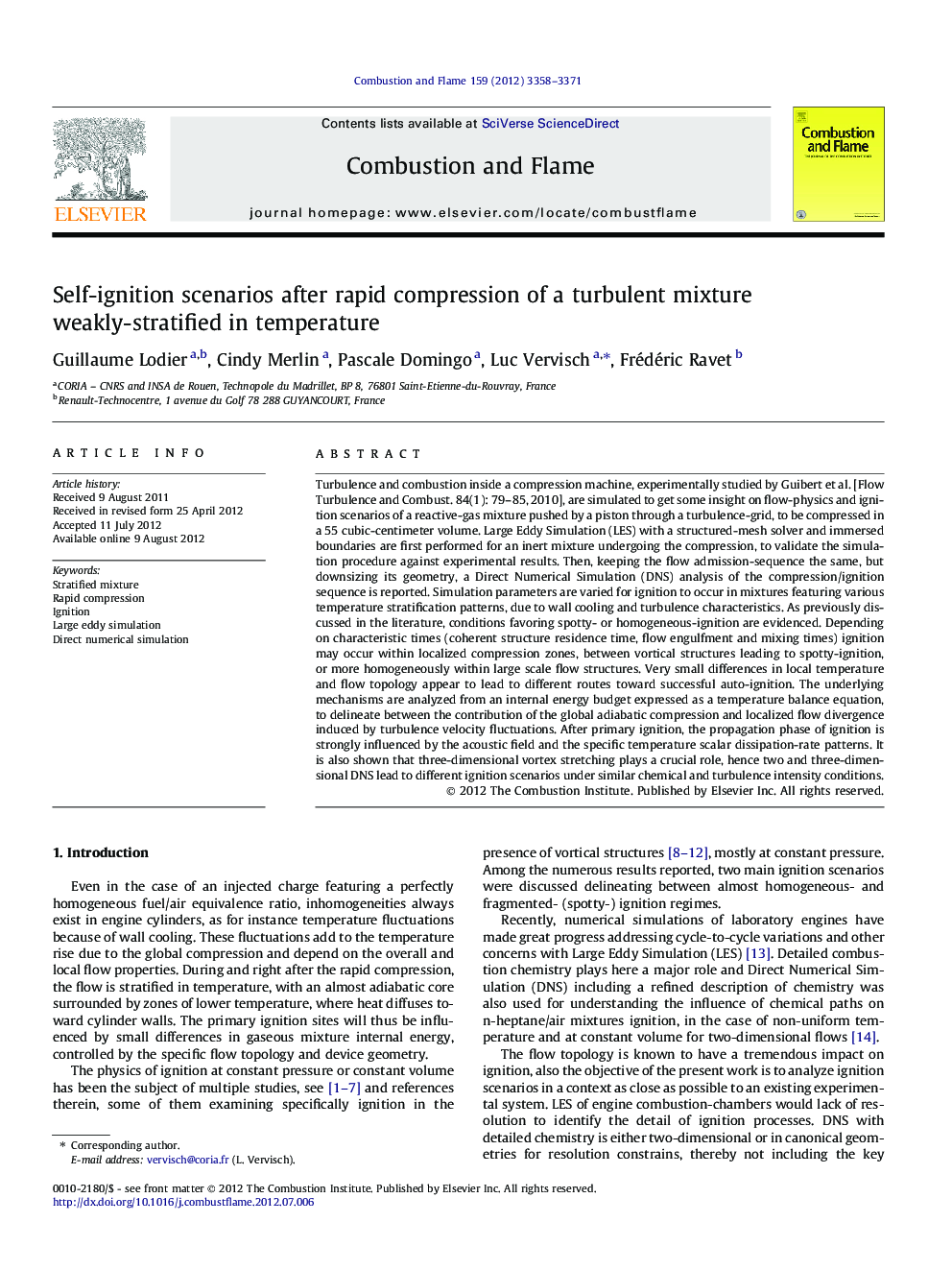| کد مقاله | کد نشریه | سال انتشار | مقاله انگلیسی | نسخه تمام متن |
|---|---|---|---|---|
| 166492 | 457782 | 2012 | 14 صفحه PDF | دانلود رایگان |

Turbulence and combustion inside a compression machine, experimentally studied by Guibert et al. [Flow Turbulence and Combust. 84(1): 79–85, 2010], are simulated to get some insight on flow-physics and ignition scenarios of a reactive-gas mixture pushed by a piston through a turbulence-grid, to be compressed in a 55 cubic-centimeter volume. Large Eddy Simulation (LES) with a structured-mesh solver and immersed boundaries are first performed for an inert mixture undergoing the compression, to validate the simulation procedure against experimental results. Then, keeping the flow admission-sequence the same, but downsizing its geometry, a Direct Numerical Simulation (DNS) analysis of the compression/ignition sequence is reported. Simulation parameters are varied for ignition to occur in mixtures featuring various temperature stratification patterns, due to wall cooling and turbulence characteristics. As previously discussed in the literature, conditions favoring spotty- or homogeneous-ignition are evidenced. Depending on characteristic times (coherent structure residence time, flow engulfment and mixing times) ignition may occur within localized compression zones, between vortical structures leading to spotty-ignition, or more homogeneously within large scale flow structures. Very small differences in local temperature and flow topology appear to lead to different routes toward successful auto-ignition. The underlying mechanisms are analyzed from an internal energy budget expressed as a temperature balance equation, to delineate between the contribution of the global adiabatic compression and localized flow divergence induced by turbulence velocity fluctuations. After primary ignition, the propagation phase of ignition is strongly influenced by the acoustic field and the specific temperature scalar dissipation-rate patterns. It is also shown that three-dimensional vortex stretching plays a crucial role, hence two and three-dimensional DNS lead to different ignition scenarios under similar chemical and turbulence intensity conditions.
Journal: Combustion and Flame - Volume 159, Issue 11, November 2012, Pages 3358–3371